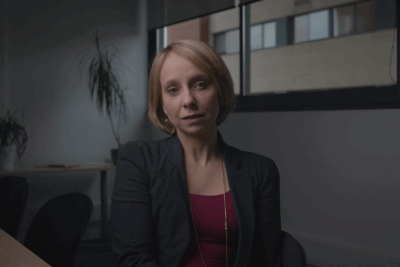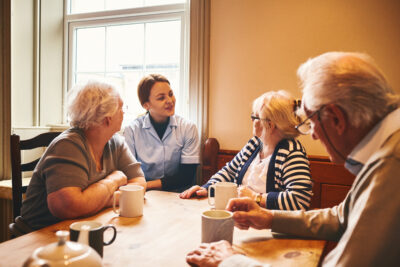16th March 2020

Un dispositif médical certifié qui analyse votre sommeil depuis votre lit et vous aide à améliorer la qualité de vos nuits.
La semaine dernière, le 13 mars, était la Journée mondiale du sommeil : cette journée se propose de sensibiliser la société aux problèmes de sommeil en améliorant la prévention et la gestion des troubles du sommeil(1).
L’apnée du sommeil
Parmi les nombreux troubles du sommeil EIT Health est particulièrement engagé dans l’accompagnement des citoyens atteints du trouble de l’apnée du sommeil : un trouble respiratoire du sommeil qui se caractérise par des pauses respiratoires de 10 à 30 secondes, voire plus, pouvant se répéter plus de 10 fois par heure. Ces apnées entraînent des micro réveils qui peuvent avoir de sérieuses conséquences sur la santé, altérant considérablement la qualité de vie et exposant à un risque accru de maladies cardiovasculaires et métaboliques.
L’apnée obstructive du sommeil (AOS) touche près d’un milliard de personnes dans le monde, entraînant une charge socio-économique et sanitaire élevée (2).
La somnolence et la fatigue excessives pendant la journée, principaux problèmes signalés par les patients atteints d’AOS, peuvent avoir des conséquences négatives sur la fonction neurocognitive, l’humeur et la productivité au travail, entraînant une diminution de la qualité de vie et un risque accru de blessures professionnelles et d’accidents de la route.
Sensapnea est un Projet du pilier Innovation soutenu par EIT Health
A partir de l’année dernière EIT Health soutient et accompagne le projet Sensapnea visant à la création et à la commercialisation d’un un dispositif numérique de diagnostic à domicile du syndrome d’apnées du sommeil.
En janvier 2019 et pour répondre à l’appel à projet d’EIT Health, le laboratoire HP2 de l’Université Grenoble Alpes (UGA), a proposé un projet visant à tester une nouvelle solution intégrée de diagnostic à domicile du syndrome d’apnées du sommeil, reposant sur un capteur innovant de mesure des mouvements mandibulaires, connecté avec une analyse automatique de l’enregistrement nocturne en intelligence artificielle et incluant une application mobile pour que médecin et patients puissent partager les résultats.
Cet appel à projets a été remporté par l’UGA et le consortium regroupant Le Groupe La Poste, le CHU de Grenoble, la startup belge Sunrise concepteur d’objets connectés, l’Imperial Collège de Londres et le living lab Madopa.
Comment utiliser le dispositif ?
Le capteur Sunrise se connecte en bluetooth à un portable. Une fois l’application mobile Sunrise installée, il suffit de scanner le QR code présent sur l’enveloppe du kit. Avant de s’endormir, l’utilisateur n’a plus qu’à coller le capteur sur son menton et lancer l’analyse depuis l’application. Quelques minutes après le réveil, les informations pour un diagnostic complet et détaillé du sommeil sont disponibles et peuvent être transmises au médecin.
Docaposte a été retenu pour fournir une solution technique de gestion sécurisée des données de santé dans une infrastructure de service Cloud souverain, ainsi que de s’assurer de la bonne compliance aux nouvelles réglementations en matière de stockage de données santé et de cybersécurité.
ProbaYes, filiale d’intelligence artificielle du Groupe La Poste, réalisera l’analyse des données.
Récemment, un article scientifique corédigé par le Prof. Pépin et Clément Letesson et publié sur la plateforme JAMA Network Open a pu valider l’efficacité et la performance du capteur basé sur l’analyse du mouvement mandibulaire (Sunrise) par rapport au PSG (Polisomnography) dans une large population de patients consécutifs suspectés d’apnée du sommeil obstructive
Sources :
2.Benjafield AV, Ayas NT, Eastwood PR, et al. Estimation of the global prevalence and burden of obstructive sleep apnoea: a literature-based analysis. Lancet Respir Med. 2019
Sensapnea Project offers a new way to measure sleep

A certified medical device that analyzes your sleep from your bed and helps you improve the quality of your nights without delay.
Last week 13 March was the World Sleep Day. WSD aims at raising awareness on the burden of sleep problems on society through better prevention and management of sleep disorders (1).
Sleep apnea disorder: a definition
Among the many sleep disorders EIT Health is particularly committed to supporting citizens suffering from sleep apnea: a sleep breathing disorder characterized by breathing pauses of 10 to 30 seconds or more, which can be repeated more than 10 times per hour. These apneas result in micro-awakenings that can have serious consequences on health, significantly altering quality of life and exposing the individual to an increased risk of cardiovascular and metabolic diseases.
Obstructive sleep apnea (OSA) affects almost 1 billion people worldwide, resulting in high socioeconomic and health care burden (2). Excessive daytime sleepiness and fatigue, the chief problems reported by patients with OSA, may have negative consequences on neurocognitive function, mood, and productivity at work, leading to decreased quality of life and increased risk of occupational injuries and motor vehicle crashes.
Sensapnea is an Innovation pillar project backed by EIT Health
In July 2019, the Sensapnea project, a digital home diagnostic device for sleep apnea syndrome, began.
In January 2019, in response to a call for projects from the European Institute for Technological Innovation in Health, the HP2 laboratory at the University of Grenoble Alpes (UGA), proposed a project to test a new integrated solution for home diagnosis of sleep apnea syndrome, based on an innovative sensor for measuring mandibular movements, connected with automatic analysis of the night-time recording in artificial intelligence and including a mobile application so that doctors and patients can share the results.
This call for projects was won by UGA and the consortium comprising La Poste Group, Grenoble University Hospital, the Belgian startup Sunrise, designer of connected objects, Imperial College London and the Madopa living lab.
How does it work?
The Sunrise sensor connects to the user’s phone via Bluetooth. Once the Sunrise mobile application is installed, simply scan the QR code present on the envelope of your kit. Before falling asleep, the user just has to stick the sensor on his/her chin and start scanning its night from the application. A few minutes after waking up, the information for a complete and detailed diagnosis of your sleep is available and can be transmitted to your doctor.
Docaposte was selected to provide a technical solution for the secure management of health data in a sovereign Cloud service infrastructure, as well as to ensure compliance with new regulations on health data storage and cybersecurity.
ProbaYes, the artificial intelligence subsidiary of La Poste Group, will carry out the data analysis.
Recently, a scientific article co-authored by Prof. Pépinet and Clément Letesson and published on the JAMA Network Open platform was able to validate the effectiveness and performance of the sensor based on mandibular movement analysis (Sunrise) compared to PSG (Polisomnography) in a large population of consecutive patients suspected of obstructive sleep apnea.
Sources:
2.Benjafield AV, Ayas NT, Eastwood PR, et al. Estimation of the global prevalence and burden of obstructive sleep apnoea: a literature-based analysis. Lancet Respir Med. 2019;7(8):687-698. doi:10.1016/S2213-2600(19)30198-5
EIT Health and the EDIT-B consortium transform bipolar disorder diagnosis with groundbreaking blood test

Discover this life-changing project today.
Three EIT Health innovators nominated for EIT Awards

Meet our three EIT Award nominees.
Hospital Clínic study reinforces patient participation as key to digital health innovation

New work published in Journal of Medical Internet Research.